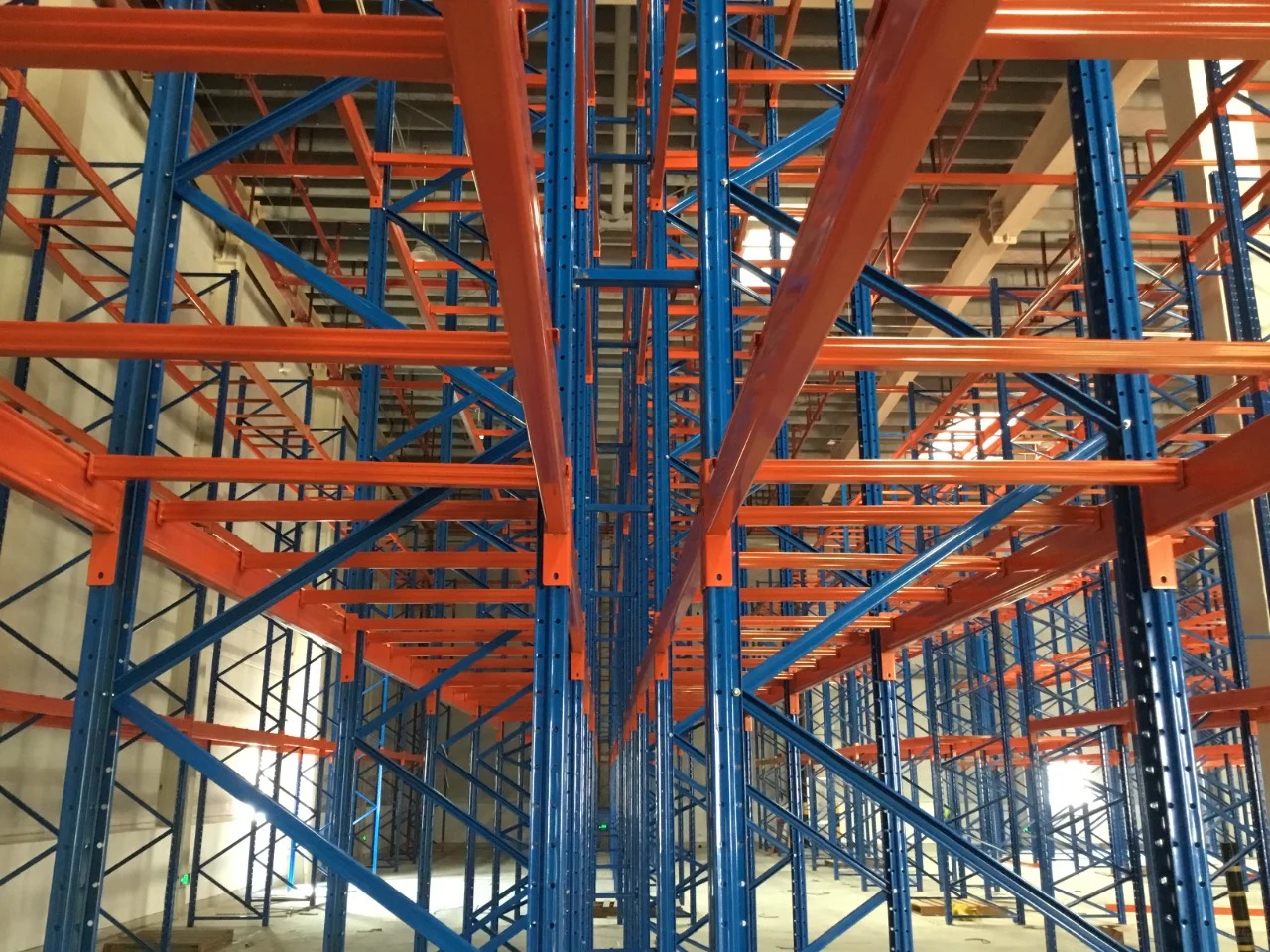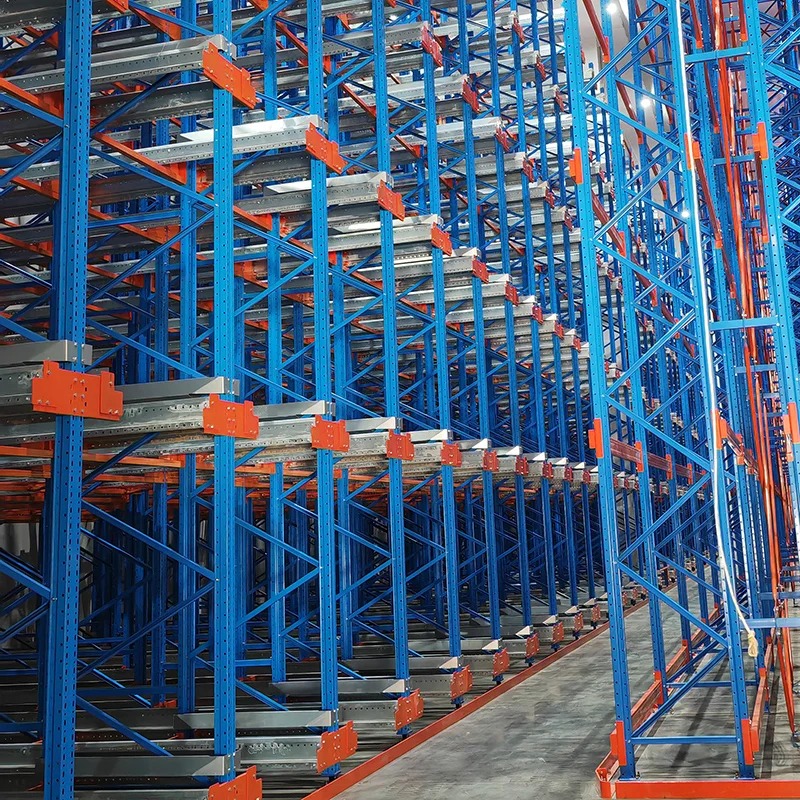The relentless pursuit of efficiency, accuracy, and space optimization in warehousing and manufacturing has propelled automated racking systems from futuristic concepts to essential operational pillars. Moving far beyond traditional static shelving, automated racking leverages sophisticated robotics, software, and control systems to revolutionize how goods are stored, retrieved, and managed. This comprehensive guide delves deep into the world of automated racking, exploring its core principles, diverse benefits, various types, critical implementation factors, and the exciting future shaping this dynamic field.

What is Automated Racking? Defining the Core Concept
At its essence, automated racking refers to storage systems where the movement of goods (pallets, totes, cases) into and out of designated storage locations is performed by automated machinery, guided by sophisticated Warehouse Management Software (WMS) or Warehouse Control Systems (WCS). Unlike conventional racking requiring forklifts and manual labor for every putaway and retrieval, automated racking systems utilize robotic cranes, shuttles, conveyors, or automated guided vehicles (AGVs) to execute these tasks with minimal human intervention.
The defining characteristic of automated racking is its integration of hardware (the physical racks and machinery) with intelligent software. This software acts as the brain, receiving orders, calculating optimal storage paths, scheduling machine movements, and managing inventory in real-time. The primary goals are to maximize vertical and horizontal space utilization, drastically reduce labor requirements for material handling, enhance inventory accuracy, improve throughput speeds, and ensure greater workplace safety by minimizing manual interaction within the storage aisles.
Key Benefits: Why Automated Racking is Revolutionizing Warehouses
The adoption of automated racking delivers a compelling array of advantages that directly impact the bottom line and operational resilience:
Unparalleled Space Utilization: Automated racking systems excel at high-density storage. By utilizing very narrow aisles (VNA) or even aisle-less designs (like shuttle systems), and maximizing building height (high-bay storage), these systems can often double or even triple the storage capacity within the same physical footprint compared to conventional racking. This is crucial in high-rent areas or where expansion is impossible.
Significant Labor Cost Reduction & Optimization: One of the most significant drivers for automated racking is the reduction in labor costs associated with manual picking, putaway, and replenishment. Machines work tirelessly 24/7 without breaks, reducing reliance on large forklift fleets and operators. Skilled labor is redirected towards higher-value tasks like quality control, system supervision, exception handling, and customer service.
Enhanced Throughput Speed & Efficiency: Automated systems operate at consistent, high speeds. Retrieval times are predictable and often significantly faster than manual operations, especially for deep-lane storage. Goods-to-person (G2P) picking, enabled by many automated racking systems, minimizes picker travel time, dramatically boosting order fulfillment rates.
Exceptional Accuracy & Reduced Errors: Integration with WMS/WCS ensures precise inventory tracking. Barcode scanning or RFID at the point of storage and retrieval virtually eliminates misplacement and picking errors. This leads to higher customer satisfaction, fewer returns, and reduced costs associated with inventory discrepancies.
Improved Workplace Safety: By automating the movement of heavy pallets and machinery within the racking aisles, automated racking drastically reduces the risk of accidents involving forklifts (collisions, tip-overs) and manual handling injuries (strains, falls). Humans are typically kept out of the active storage aisles.
Optimized Inventory Management & Traceability: Real-time tracking of every item's location and movement provides unparalleled inventory visibility. This facilitates better stock rotation (FIFO/FEFO), reduces shrinkage, simplifies cycle counting, and enables precise traceability for compliance and recall situations.
Scalability & Flexibility: Modern automated racking systems are modular. Capacity can often be increased by adding more storage positions or shuttles. Software updates can optimize workflows as business needs evolve. Some systems can handle multiple SKU profiles and load types within the same framework.
Exploring the Landscape: Key Types of Automated Racking Systems
The world of automated racking is diverse, offering solutions tailored to different product profiles, throughput requirements, and budgets:
Automated Storage and Retrieval Systems (AS/RS) for Unit Loads (Pallets):
Description: The workhorse of large-scale pallet storage. Features aisle-bound cranes running on floor-mounted rails within very narrow aisles (VNA-AS/RS). Cranes have telescopic masts to reach high levels.
Components: Storage structure, aisle crane(s), pallet conveyor interfaces, control system (WCS), often integrated with WMS.
Best For: High-volume warehousing of full pallets (inbound, reserve storage, buffer storage for production). Ideal for FMCG, beverages, manufacturing raw materials/finished goods.
Variations: Single-deep (standard), Double-deep (higher density but lower selectivity), Pallet Shuttle within AS/RS lanes (see below).
Automated Pallet Shuttle Systems:
Description: A high-density solution for deep-lane storage (multiple pallets deep per lane). Uses remotely operated or battery-powered shuttles that run on rails within a storage lane. Shuttles move pallets to the front (for retrieval) or push them deep into the lane (for storage).
Components: Storage structure with guide rails per lane, shuttles, lift tables at the front of lanes, conveyor or transfer cars, control software.
Best For: High-density storage of homogeneous pallet loads with high FIFO or FEFO requirements (e.g., food & beverage, chemicals, seasonal goods). Excellent space utilization.
Automation Level: Can be semi-automated (shuttle placed manually in lane) or fully automated (integrated with transfer cars and WCS for autonomous shuttle deployment).

Mini-Load AS/RS (for Totes/Cartons):
Description: Designed for handling smaller loads stored in plastic totes, cartons, or trays. Cranes are typically lighter and faster than unit load AS/RS, operating in narrower aisles. Often feature dual load handling devices for simultaneous retrieval/storage.
Components: Storage structure, mini-load crane(s), tote/carton handling conveyor system, workstations (for Goods-to-Person picking), control system (WCS/WMS).
Best For: High-volume order fulfillment for e-commerce, spare parts distribution, pharmaceuticals, retail DCs handling split cases. Enables highly efficient Goods-to-Person picking.
Vertical Lift Modules (VLMs) & Vertical Buffer Modules (VBMs):
Description: Closed, free-standing units with vertically moving trays or pallet carriers. An inserter/extractor mechanism delivers requested trays/pallets directly to an ergonomic operator access point.
Components: Enclosed cabinet, vertical lifting mechanism, tray inserter/extractor, controller, operator interface.
Best For: High-density storage for small parts, tools, samples, documents, or buffer storage for production lines (VBMs). Maximizes floor space, enhances security and ergonomics. Often used as "point solutions" within larger warehouses.
Autonomous Mobile Robots (AMRs) for Racking Interaction:
Description: While not "racking" itself, fleets of AMRs are increasingly being integrated with existing or modified racking structures. AMRs can autonomously transport pallets or mobile shelves (like "Autonomous Case-Handling Carts" or shelf-carrying robots) between storage locations and workstations.
Components: AMRs, docking stations, charging infrastructure, fleet management software (RCS), integrated WMS/WCS, potentially modified racking bases.
Best For: Adding automation flexibility to brownfield sites, piece-picking augmentation, dynamic storage allocation. Offers scalability and adaptability without major fixed infrastructure.
Critical Considerations for Implementing Automated Racking
Successfully deploying automated racking requires meticulous planning beyond just selecting hardware:
Thorough Needs Analysis & Feasibility Study: Define clear objectives (throughput targets, SKU profiles, space constraints, labor savings goals). Analyze current processes, inventory data, and future growth projections. A detailed feasibility study, often with vendor support, is crucial.
Software Integration: The Critical Nervous System: The WMS/WCS is arguably more critical than the hardware. Ensure seamless integration between the automated racking control system, the enterprise WMS/ERP, and any other automation (conveyors, sorters, AMRs). Robust software ensures optimal performance, real-time visibility, and efficient order orchestration.
Infrastructure & Facility Requirements: Automated racking demands a suitable environment. Consider floor flatness tolerances, structural building integrity (especially for high-bay systems), adequate power supply, HVAC (for electronics), fire protection systems designed for high-density storage, and robust network connectivity.
Change Management & Workforce Training: Automation transforms workflows. Proactive change management is essential to gain buy-in from staff. Training programs must focus on new roles – system supervision, maintenance, exception handling, and utilizing the technology effectively – rather than just operating forklifts.
Total Cost of Ownership (TCO) & Justification: Automated racking involves significant upfront capital expenditure (CAPEX). A comprehensive TCO analysis must include hardware, software, installation, integration, facility modifications, maintenance contracts, and operational savings (labor, space, error reduction, productivity gains) over the system's lifespan (typically 10-15+ years). ROI calculations should factor in both hard and soft benefits.
Vendor Selection & Partnership: Choosing the right technology partner is paramount. Evaluate vendors based on experience, system reliability, software capabilities, integration expertise, service and support network (especially critical for uptime), scalability of their solution, and financial stability. Look for partners, not just suppliers.
The Future of Automated Racking: Trends Shaping Tomorrow's Warehouses
Automated racking technology continues to evolve rapidly, driven by advances in AI, robotics, and data analytics:
Artificial Intelligence (AI) & Machine Learning (ML): AI is optimizing automated racking beyond simple rules. ML algorithms predict demand patterns, optimize storage location assignment dynamically (based on velocity, affinity, etc.), predict maintenance needs (predictive maintenance), and continuously improve system performance and energy efficiency.
Enhanced Robotics & Manipulation: Development continues towards more dexterous robots capable of handling irregular or fragile items within automated racking environments, expanding the range of automatable SKUs. Vision systems are improving object recognition and precise placement.
Hyperconnectivity & Industrial IoT (IIoT): Sensors embedded throughout the automated racking structure and machinery provide vast amounts of operational data (vibration, temperature, performance metrics). IIoT platforms aggregate and analyze this data for real-time monitoring, performance dashboards, and deeper operational insights.
Cloud-Based Control & Analytics: WCS/WMS functionalities are increasingly moving to the cloud, offering greater scalability, easier updates, remote monitoring, and advanced analytics capabilities accessible from anywhere. This facilitates data-driven decision-making.
Integration with Broader Automation Ecosystems: Automated racking is rarely an island. Seamless integration with other automation – like automated guided vehicles (AGVs/AMRs) for transport, robotic palletizers/depalletizers, automated sortation systems, and robotic picking arms – creates fully optimized, end-to-end automated warehouses and distribution centers. The automated racking system acts as the high-density storage nucleus within this ecosystem.
Sustainability Focus: Energy efficiency is a growing priority. Regenerative drives on cranes feeding power back into the grid, optimized movement algorithms to minimize energy consumption, and the use of sustainable materials in construction are becoming more prevalent in automated racking designs.
Automated racking is no longer a luxury reserved for the largest corporations; it's becoming a strategic necessity for businesses seeking competitive advantage through operational excellence. The compelling benefits – maximizing space, slashing labor costs, boosting speed and accuracy, enhancing safety, and providing unparalleled inventory control – deliver significant ROI when implemented correctly. The diverse range of automated racking solutions, from towering AS/RS to agile shuttle systems and flexible AMR-integrated approaches, means there's a fit for various applications and budgets.
While the initial investment and implementation complexity are substantial, careful planning, robust software integration, effective change management, and choosing the right partner mitigate risks. As technology advances with AI, IoT, and smarter robotics, the capabilities and value proposition of automated racking systems will only continue to grow. For businesses looking to future-proof their logistics operations, improve resilience, and meet the escalating demands of modern supply chains, investing in automated racking represents a transformative step towards a more efficient, accurate, and profitable future. The era of intelligent, automated storage is unequivocally here.







